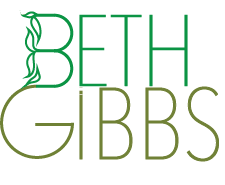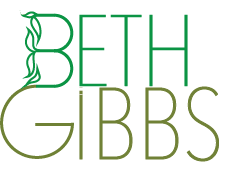ENLIGHTEN UP! a blogSelf-awareness stories: lighting our way to clarity, contentment and resilience in a complicated world.
|
 An intention, according to Webster’s Dictionary, is: “A concept formed when the mind is directed toward an object.” You can create intentions for all aspects of your life, physical, energetic, mental, emotional or spiritual. Here are some ways to think about creating intentions that will work for you. New Year’s Resolutions. These have a long tradition on planet earth. Ancient Babylonians made promises to their gods at the start of each year to return borrowed objects and pay their debts. Ancient Romans offered sacrifices and made promises of good conduct for the coming year to Janus (the Roman deity that January is named for). For early Christians, the first day of the New Year was a time to think about past mistakes and resolve to do and be better in the future. Today, New Years Resolutions tend to be grounded in our personal desire to change something about ourselves: our appearance, our behavior or our health. We set big goals and then dedicate the year toward actualizing them. The most common resolutions these days are about losing weight, going on a diet, quitting an unhealthy habit like smoking, making more money etc. Sadly, according to most statistics, our efforts to effect those personal changes are dropped before the year is up. I confess, I have made New Year’s resolutions like those in the past – made’em and broke’em. They were mostly about losing weight, meeting the National Institutes of Health guidelines for exercise, cutting out sugar etc. The good news is that I’ve found other ways, to create and set intentions for changing my lifestyle, habits and health. They are: Practical Life Intentions These can range from short-term personal, work or family responsibilities to long-term strategic planning for running a business, managing personal finances or completing creative projects such as crafts, writing or fine arts. Short-term intentions are usually found on our daily to-do lists if we make them. Long-term planning may start with a big idea that we break down into manageable tasks that can be accomplished on a daily or weekly basis to build a foundation of success over time. For example, I made an intention to begin a sitting meditation practice. Knowing my habit of getting excited about starting projects and then losing steam over time, I began by choosing a meditation technique suitable for my busy, active, creative mind. I committed to start with five minutes and then add one to three minutes a month. This slow steady pace worked. I am now up to 20 minutes a day. I think I may have skipped a total of four to six days in the past year — not a bad start! Creating specific intentions for different areas of our lives lends a depth of richness and conscious self-awareness to our experiences. Take exercise for an example. Whether we practice yoga, workout at the gym or on our own to DVD’s or online trainers we can create a specific intention for our experience. We can:
A Heartfelt Intention or Resolve. In yoga speak it’s called a sankalpa. This type of intention is often used for a much deeper dive into self-awareness. This intention practice starts with a basic understanding of the essential truth of many spiritual paths; that we are already whole, just as we are. What comes next is realizing the meaning of this in our everyday lives to bring us closer to that realization and help us find productive ways to express it in our relationship to ourselves, to others and to our planet. Although this type of intention is directed toward self-realization or self-healing, Thich Nhat Hahn, the revered Buddhist monk says, “When you say something with your whole being…. it can transform the world.” Here’s the ‘how to.’ Creating a Heartfelt Intention This starts with a short positive statement made in the present tense. Creating and working with your heartfelt intention will remind you of what is already true so you don’t have to apply ego, willpower or striving. In the yoga tradition, positive statements are said to bring longer lasting results. This perspective is reinforced by the first verse of a song from 1944 titled, Accentuate The Positive: You've got to accentuate the positive Eliminate the negative Latch on to the affirmative But don't mess with mister in between So let’s not put our heartfelt intentions in the negative, such as: I won’t eat sugar, I won’t smoke, etc. We first want to find the words that ‘feel’ right for us and then let them play out in our lives – long term. It is recommended to work with the same intention until the goal is reached – over a few months, years or a lifetime. Some examples of this type of intention are: I am awake and aware I am happy, healthy, and whole I am calm, peaceful, and relaxed Notice that the first two words are “I am,” not “I want to,’ “I will,” or “I won’t.” Also notice that the next few words relate to deep self-awareness states as opposed to, “I want to lose weight,” or “I will expand my business by five percent. However, there is absolutely nothing wrong with creating and working with an intention for these goals. If you choose to use this practice for more practical matters like losing weight or expanding your business, you can word your intention this way: I am a healthy weight I am a successful business owner Creating this type of intention requires some time and careful thinking. My heartfelt intention (which I will keep private) is a deeply felt phrase for reminding me of my true nature. I use it when I practice yoga, when I meditate, and off and on during the day when it pops into my mind. I took my time to choose it. I thought long and hard about which words would inch me toward a deeper realization of my place in this huge, amazing, mysterious experience we all share. I’ve been using it for four years now and will probably use it for my whole lifetime. Here are some steps to consider when creating your heartfelt intention for deep self-awareness and personal growth. 1. Find it. A few lines from a character in one of my short stories will illustrate the process. Over lunch, Miss Millie is sharing wisdom with a young woman seeking help for a mid-life identity crisis. She tells her to, “Ask the important questions. Become quiet. Listen within for the answers. Be patient with yourself. Trust your own process and be brave.” Patience is key because it will take time. However, if you want to start right away, you can use one of the three examples above until you uncover your own. 2. Remember it. You can remind yourself of your intention by writing it on sticky notes and tacking them to your fridge, closet door or bathroom mirror. They will act as daily visual reminders. You can journal about it, noting any blocks, obstacles, thoughts or emotions that arise around it. You can state it, silently or out loud. If you practice yoga, three of the best times to repeat it silently are when you meditate, set up for relaxation after yoga practice or prepare for yoga nidra, in which stating a sankalpa is an important step in the process Relaxed awareness is the key to managing stress. My Yoga Nidra practice is available here. In this way, we remind our subconscious mind to work on our intention and send gentle reminders to our conscious mind. These reminders may ‘pop’ when we wake up in the morning, drive to work, exercise, cook, clean, or at any other time during the day. Keeping our intention alive enables us to strengthen our connection to our true nature, make mid-course corrections and return to our path if we take a detour and get lost, and we always do – we are works in progress! When you are ready to dive deeper than practical life intentions or New Year’s resolutions you can try practicing a heartfelt intention. Here’s wishing you success with creating your intentions in one or more ways in 2020!
1 Comment
|
Archives
July 2024
AuthorBETH GIBBS started her yoga practice in 1968, four months after her son was born and she’s been practicing ever since. She currently teaches all levels therapeutic yoga classes for adults, and specialty classes for seniors in the Hartford, Connecticut area. Beth is a certified yoga therapist through the International Association of Yoga Therapists and is guest faculty at the Kripalu School of Integrative Yoga Therapy. She writes for the blogs, Yoga for Healthy Aging, and Accessible Yoga. Her master’s degree from Lesley University in Cambridge, MA is in Yoga Therapy and Mind/Body Health. Categories |
|
|
Enlighten Up! a Blog
|
Copyright © 2023 Beth Gibbs

 RSS Feed
RSS Feed
